The title of edible plants is used for this small section of wild flowers and shrubs. The title may be a little misleading as we have included species used for making drinks also. We will be looking into some of the plants that have been used by various groups over the years, with many still used in the same manner today. |
 |
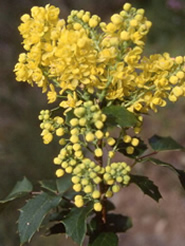 |
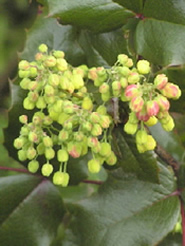 |
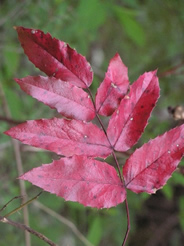 |
Oregon grape and Tall Oregon grape.
These are evergreen shrubs with holly like leaves, although the leaves turn different shades of reds in the winter. It bares large clumps of yellow flowers in elongated clusters and blue fruits. The dark blue berries can be eaten raw but also make an excellent jelly. It prefers woods and dry hillside thickets.
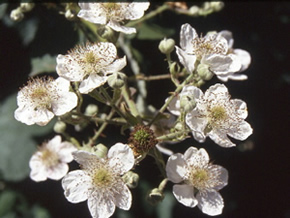 |
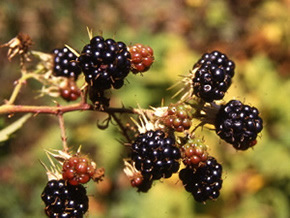 |
Himalaya Berry Flowers and fruits.
There are a number of these types of trailing shrubs and the main one used as a food is the Himalayan Berry. It has a number of common names such as, blackberries or brambles. The black fruits are very popular for a variety of food products from pies to crumbles and also alone with cream.
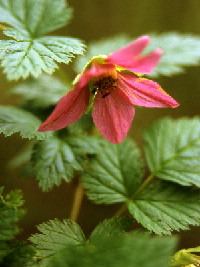 |
 |
Salmonberry, Rubus spectabilis with the flower on the left and the fruit on the right.
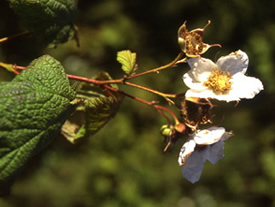 |
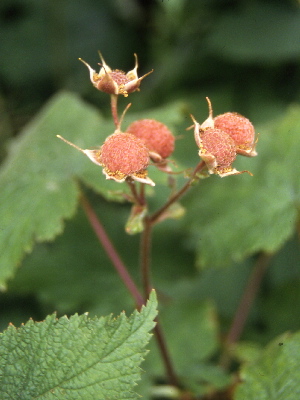 |
|
Thimbleberry, Rufous parviflorus, above with the fruit on the right..
TheTthimbleberry is an unarmed shrub growing to 8 feet. The leaves are large and deeply cut. It carries large white flowers in terminal clusters with red fruits. It is found in open woods in moist to dry areas and to subalpine levels. The fruits are eatable and can be used in many dishes. |
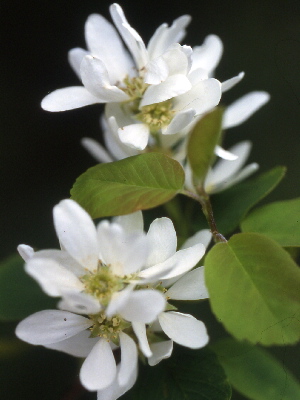 |
Saskatoon berry, Amelanchier alnifolia. This is a deciduous shrub with oval leaves to nearly circular. It enjoys well drained conditions. The flowers are white and appear in early spring as the new leaves are still growing. The fruit is small and purple in color. This fruit is edible and tastes sweet and are used in pies and jams. |
Wild Ginger, Asarum caudatum. This decidious plant favours moist shady sites with humus rich soil.The leaves are heart shaped from a rhizome under the soil surface. Two leaves emerge each year from the growing tips. The flowers are a strange jug shape, singly in the spring. These purplish brown flowers are often difficult to see and are probagated by beetles. The roots can be used as a spice and can also be made into a tea. |
 |
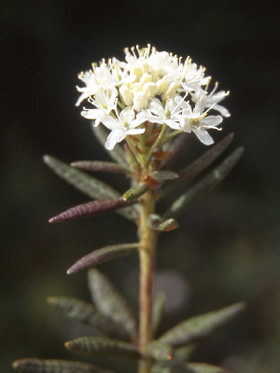 |
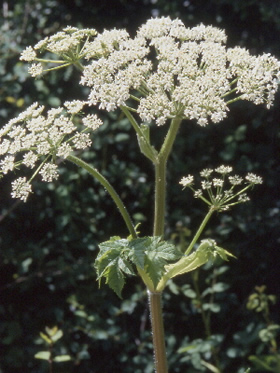 |
Labrador Tea, Ledum groenlandicum. This is a low aromatic evergreen shrub with oblong shaped leaves. The flowers are white and cream colored in terminal umbrella-shaped clusters. These shrubs enjoy moist and wet bogs and swamp like conditions. The leaves may be used as a tea although a few drops of lemon juice may improve the flavor along with a change of boiling water. |
Cow Parsnip, Heracleum lanatum. This plant is a weedy perennial plant with stout strong stems that grows to 10 feet tall. Leaves are large and deeply lobed clasping the stems. It’s a seashore plant throughout the length of the coast line. The flower stems before they flowers open, may be peeled and the inner portion eaten green. These young stems are as palatably as stewed celery if boiled until tender. |
Nettle, Urtica species. This weed is a simple erect stem plant with the leaves coarsely toothed and with stinging bristles. The green flowers vary and are small and inconspicuous in the axil of the leaves. The young shoots as they appear in the spring can be boiled and used as spinach. It is also made into a tea with a quart of boiling water and five handfuls of young tips infused for several hours. |
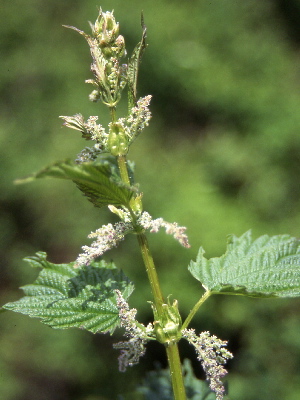 |
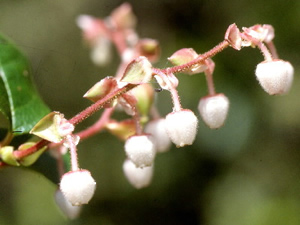 |
Salal, Gaultheria shallon. This is an erect wiry evergreen shrub with ovate leathery leaves. The flowers are in clusters and in a row along the flowering branch. Its habitat includes forest thickets, ravines and exposed shores. The fruit is edible and very pleasant when ripe. It should be placed high on the list for those lost in the bush. |
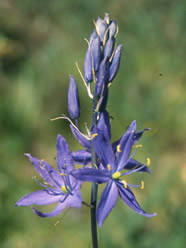 |
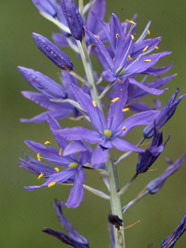 |
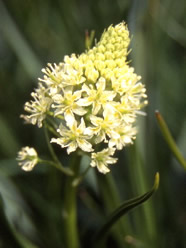 |
Camas, Camassia quamash and Camassia leichtlinnii, and death camas.
The two blue camas flowers were a great part of the earlier day’s food source for the native people. The bulbs when well cooked are very nutritious. With the death camas appearing as the same as the other plants when not in flower, they were dug up so as not to be collected by mistake. Camassia quamash flowers earlier than the Great Camas, Camassia leichtlinnii. The Great Camas curls and twists the tepals together to cover and protect the fruit while the other camas does not.
Chicory, Cichorium intybus. The chicory plant is a tall perennial with loosely branching stems along with a deep taproot. The leaves resemble those of the dandelion becoming reduced upwards. It grows rapidly on waste ground and roadsides and fields. The basal leaves, blanched in early spring makes a tasty salad. The roots, dried and ground, make an excellent coffee substitute |
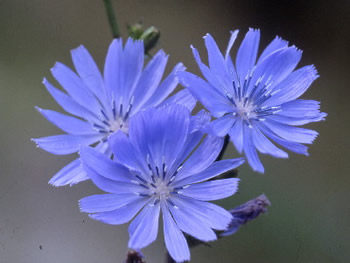 |
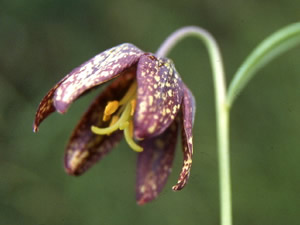 |
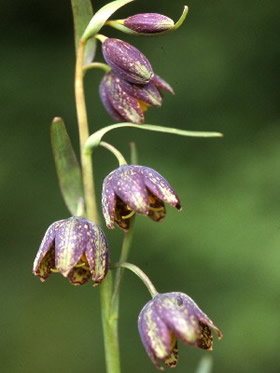 |
|
The Chocolate Lily, Fritillaria lanceolata, usually carries a single flower with 2 or 3 being rather a rarety. More than three is most unusual. |
Chocolate Lily, Fritillaria lanceolata.
This lily is a perennial plant with a simple stem from a large scaly bulb surrounded by bulblets resembling grains of rice. This gives the plant another common name of Rice root. These bulbs cooked or steamed are a source of a nutritious food. It enjoys the coastal zone with grassy slopes and open woods.
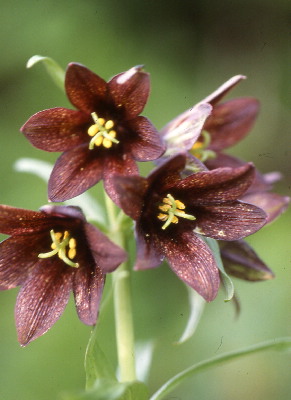 |
Black Lily, Fritillaria camschatcensis. This is a staple food in areas where it grows wild. The bulb when cooked is like baked chestnuts. The bulb can also be dried and ground up and used as a flour for making bread. It best harvested in the fall. The seed pods can be eaten raw or cooked but they are bitter. |
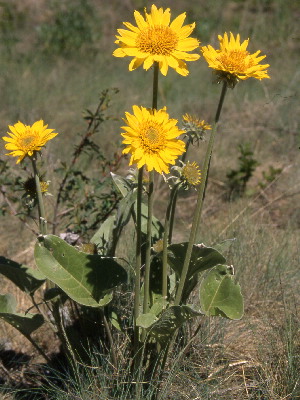 |
Balsam Root, Balsamorrhiza species. A bright showy sunflower plant with solitary heads of yellow flowers. The leaves are large and basal and mostly triangular or heart shaped. Open dry hills and slopes are where you will find this sun loving plant. The ripe seed when pounded is quite palatable. The whole seed can also be eaten and the fleshy roots, when roasted are quite pleasant. |
Dandelion, Taraxacum species. This is a well know plant and the scurge of the garden. It has a long tap root that is difficult to remove. The yellow flowers are well known also. The green leaves may be used as a salad or cooked like greens, although the water should be changed to remove the bitterness. The roots also can go into a salad. The roots can also be made as a beverage, a substitute for coffee. |
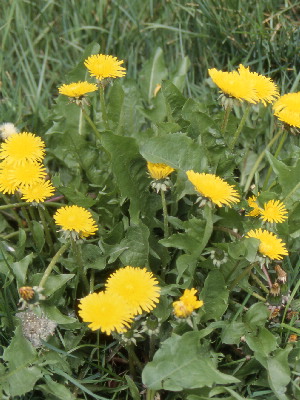 |
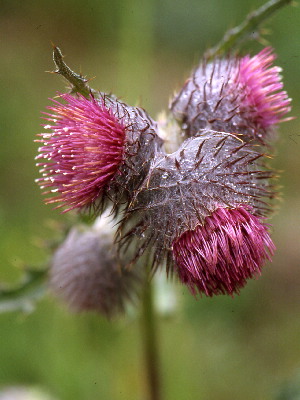 |
Edible Thistle, Cirsium species.This is a tall biennial plant with prickly leaves and a heavy cluster of mauve to purple flowers. Usually found at higher levels along roadsides and open areas. The roots are considered a useful source of food and all thistles have none poisonous properties. |
||
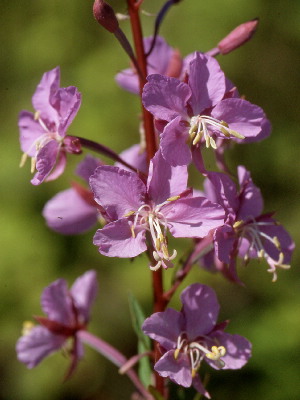 |
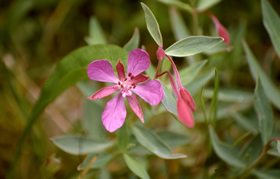 |
|
Fireweed, Epilobium angustifolium, on the left and Broad-leaved Willowherb, Epilobium Latifolium, above, 2 of the Epilobium group. Epilobium angustifolium is well known as Fireweed it is also called Great willow herb. This plant can grow to six feet with lance shaped leaves resembling willow. The flowers are very showy and pink to purple on long spike like clusters. The young leaves can be used as greens and thedried leaves may be used to make a beverage. |
Kinnikinik or bearberry. Arctostaphylos uva-ursi. This is an evergreen trailing shrub that forms a low covering mat like growth. The flowers are pink and are in nodding clusters which form red or reddish berries. These berries when raw are rather tasteless but quite palatable when they are cooked. |
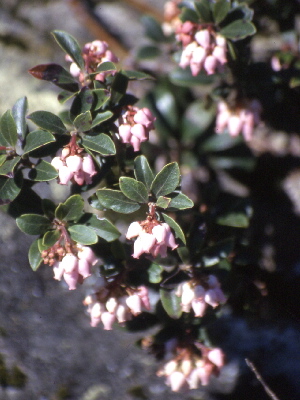 |
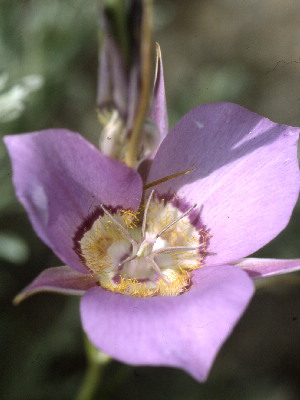 |
Mariposa Lily, Calochortus macrocarpus. This lily is a perennial plant from a bulb about the size of a walnut. The plant has grass like leaves and usually 1 flower which are showy with three petals. Enjoys grassy slopes and can stand a hot climate. The corms are palatable and nutritious when boiled, roasted or steamed. |
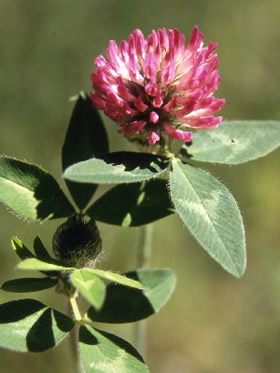 |
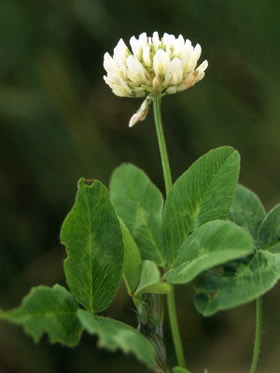 |
Clover, Trifolium species. Most people know what clovers look like, and seek hoping to find a four leafed clover when they are only three leaflets. They occur in many different habitats from fields to bluffs. There are numerous species with the red clover being the most commonly recognized. The roots are said to be sweet and pleasant. The leaves can be used as a salad. |
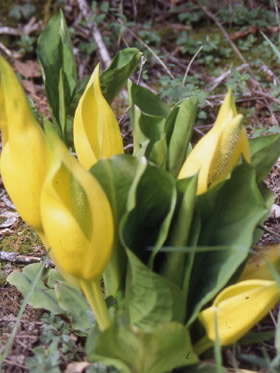 |
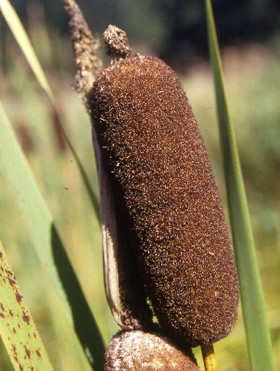 |
Yellow Arum, Lysichiton americanum. Skunk cabbage is another common name for this perennial plant. The leaves are large and succulent with deeply impressed leaves. It grows in swampy conditions in the shade. The roots when dried and ground into a flour makes an emergence ration. The young leaves as they appear above the ground make an agreeable pot herb. |
Cat-tail, Typha latifolia. A well known marsh or wetlands plant that enjoys the shallow water of lakes and ponds. A perennial with sword like leaves and growing to five feet or more. The flowers are in a spike like a bottle brush and brown in color. Its young shoots are stripped of the outer layer with the white inner making a pleasant food. |
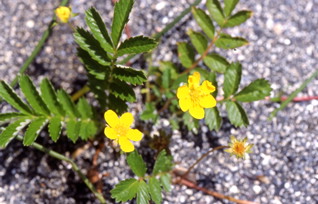 |
Silverweed, Poetentilla answerina. The Silverweed is a low growing perennial plant that spreads by runners. The leaves are feather like and silvery underneath and green above with showy bright yellow flowers. Its favorite habitat is along the coast in moist areas and wet soils inland. The roots are edible and wholesome and when boiled or roasted taste like parsnips. |
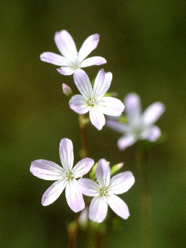 |
Siberian Miners Lettuce, Montia sibirica. This is one of two succulant members of the purslane family. It grows best in sandy soils of shaded areas from California to Alaska. Both this one and Montia perfoliata have long provided a vitimin rich greens for the native people to the goldrush miners.
|
Sheep Sorrel, Rumex acetosella. This is a weedy perennial plant with simple and erect stems to 12 inches high. The leaves are mainly basal and are narrow and lobed at the base like an arrow. The flowers are rather small and insignificant and reddish in color. . The leaves of the young plant are refreshing when eaten raw. They can be substituted for sour things in soups and sauces. |
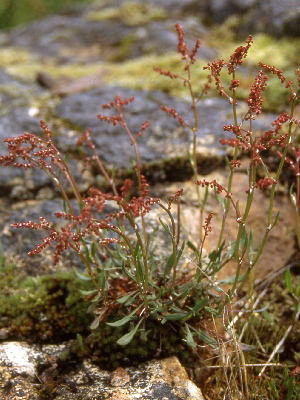 |